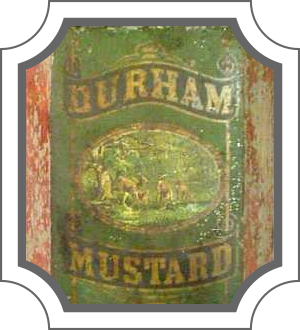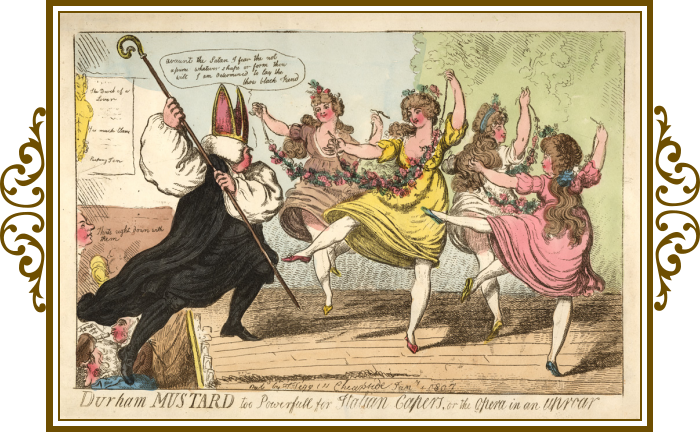Mustard as we know it, may have originated from part of the original Vennels building.
The story begins in 1720 with Durham’s own Mrs Clements who discovered that grinding mustard seeds like flour produced a stronger flavour. It was finely milled, separated from the stems etc and the resulting fine powder was much more pungent. It is believed that Mrs Clements shared her Mustard with her neighbours and word spread. Before long she headed to London and introduced her new recipie to King George 1st whom enjoyed it so much, he patented the product. The mustards popularity grew and grew as Mrs Clements travelled throughout England taking orders for her product.
The business was later passed to a stationer called Ainsley but after facing competition from imported brands the Durham mustard ceased to be produced. The original Durham mustard has since passed into the hands of Colemans of Norwich where it is known today as English Mustard. You can still buy a jar of “Mrs Clements” branded mustard from the East India Company.
Caricaturist Isaac Cruikshank’s satirical painting, "Durham mustard too powerfull for Italian capers, or the opera in an uproar" shows just how prominent Durham’s mustard trade had become. The piece shows the Bishop of Durham striding on to the stage to protest at the antics of the opera chorus girls. Crossing over the (candle) footlights, wearing a mitre and holding his crozier as if to strike the pirouetting dancers he shouts: “Avaunt the Satan, I fear thee not. Assume whatever shape or form thou wilt. I am determined to lay thee, thou black Fiend!”
Further information on the piece can be found at the British Museum.


